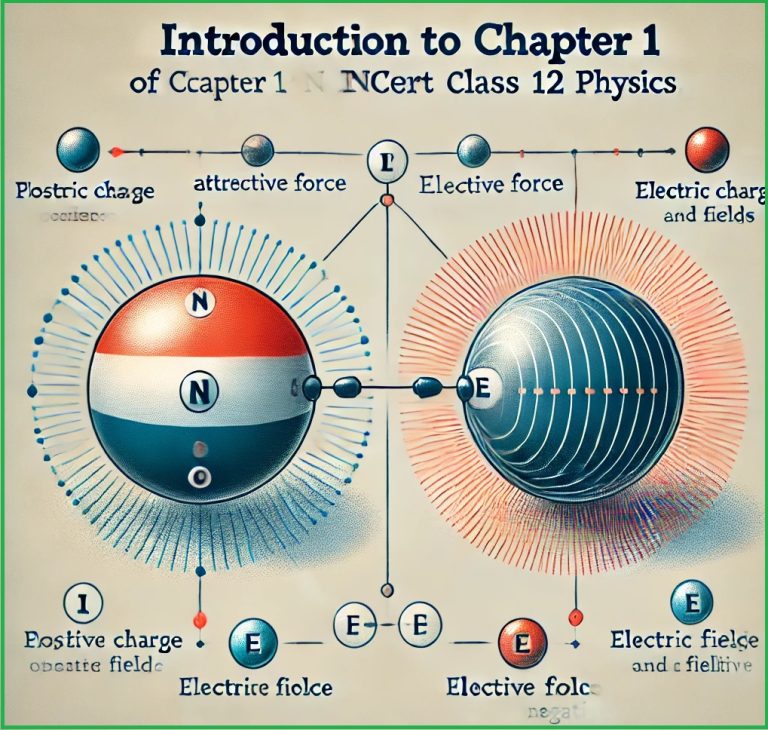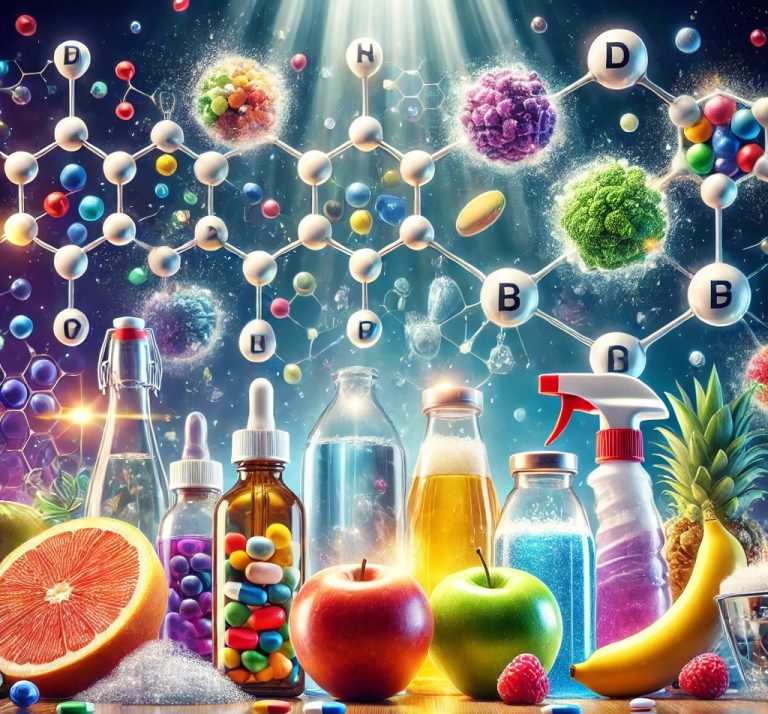Solubility, Vapor Pressure, and Related Concepts: A Detailed Explanation
The study of solutions is fundamental in chemistry as it influences various fields such as biology, environmental science, pharmaceuticals, and industrial processes. Among the many concepts related to solutions, solubility, vapor pressure, and their interrelations are key to understanding how substances behave when dissolved. In this article, we will discuss these concepts in detail, exploring their definitions, factors affecting them, and how they influence the properties of solutions.
1. Solubility: An Overview
Solubility refers to the maximum amount of solute that can dissolve in a given quantity of solvent at a particular temperature and pressure. Solubility is usually expressed in terms of moles per liter (mol/L), grams per liter (g/L), or molality (mol/kg). It is an important property of solutions and plays a crucial role in chemical reactions, the formulation of solutions in laboratories and industries, and the transport of substances in biological systems.
(a) Types of Solubility
- Saturated Solution: A solution that contains the maximum amount of solute that can dissolve at a given temperature and pressure. No more solute can dissolve in the solvent; any additional solute will remain undissolved.
- Unsaturated Solution: A solution that contains less solute than the saturation point, meaning more solute can still dissolve in the solvent.
- Supersaturated Solution: A solution that contains more solute than would normally dissolve at a given temperature. This occurs when a saturated solution is heated and more solute is dissolved, then carefully cooled. Supersaturated solutions are unstable and tend to crystallize the excess solute when disturbed.
(b) Factors Affecting Solubility
- Temperature: For most solid solutes, solubility increases with temperature. However, for gases, solubility usually decreases as temperature increases because higher temperatures provide more kinetic energy, causing gas molecules to escape from the solution.
- Pressure: The effect of pressure on solubility depends on the phase of the solute:
- Solids and Liquids: Pressure has little effect on the solubility of solids and liquids because their volumes are relatively incompressible.
- Gases: Solubility of gases in liquids increases with an increase in pressure, as described by Henry’s Law. This is why carbonated beverages are bottled under high pressure to keep the gas dissolved.
- Nature of Solute and Solvent: The solubility of a substance also depends on the nature of the solute and solvent. A common rule is “like dissolves like,” meaning polar solutes dissolve in polar solvents (e.g., salt in water), and nonpolar solutes dissolve in nonpolar solvents (e.g., oil in hexane).
- Surface Area of Solute: The greater the surface area of the solute, the faster it dissolves because more solute particles are exposed to the solvent.
- Agitation: Stirring or shaking the solution can increase the rate of dissolution by bringing fresh solvent into contact with the solute, though it does not affect the final solubility.
(c) Solubility Curves
Solubility curves are graphical representations that show how the solubility of a solute changes with temperature. These curves are particularly useful for understanding the behavior of salts and other compounds in solution under varying conditions. For instance, a solubility curve for sodium chloride shows that its solubility increases with temperature, whereas for gases like carbon dioxide, solubility decreases as temperature increases.
2. Vapor Pressure: Concept and Behavior
Vapor pressure is the pressure exerted by a vapor in equilibrium with its liquid or solid phase at a given temperature. It is an essential property of liquids and volatile substances, as it determines how readily a substance evaporates.
(a) How Vapor Pressure Works
When a liquid is placed in a closed container, molecules at the surface of the liquid have sufficient energy to escape into the vapor phase. Over time, some of the molecules in the vapor phase condense back into the liquid phase. At equilibrium, the rate of evaporation equals the rate of condensation, and the pressure exerted by the vapor is called the equilibrium vapor pressure. The magnitude of vapor pressure depends on the temperature and the nature of the substance.
(b) Factors Affecting Vapor Pressure
- Temperature: As temperature increases, the kinetic energy of the molecules increases, causing more molecules to escape the liquid phase and thus increasing the vapor pressure. This relationship is exponential, meaning a small increase in temperature results in a large increase in vapor pressure.
- Nature of the Liquid: Substances with weak intermolecular forces (such as alcohol or acetone) tend to have high vapor pressures because it is easier for the molecules to escape into the vapor phase. In contrast, substances with strong intermolecular forces (like water or glycerol) have low vapor pressures.
- Molecular Weight: Generally, heavier molecules with more complex structures have lower vapor pressures because the larger molecules tend to have stronger intermolecular forces, which hold them more tightly in the liquid phase.
- Presence of Solutes: When non-volatile solutes are added to a solvent, the vapor pressure of the solvent decreases. This is due to the reduction in the number of solvent molecules at the surface available to evaporate.
(c) Raoult’s Law
Raoult’s Law states that the vapor pressure of a solvent in a solution is directly proportional to the mole fraction of the solvent in the solution. For an ideal solution, the vapor pressure of the solvent (P1P_1P1) is given by:P1=X1P10P_1 = X_1 P_1^0P1=X1P10
Where:
- P1P_1P1 is the vapor pressure of the solvent in the solution.
- X1X_1X1 is the mole fraction of the solvent.
- P10P_1^0P10 is the vapor pressure of the pure solvent.
This law holds true for ideal solutions, where the interactions between the solute and solvent molecules are similar to the interactions between the molecules of the pure substances. In non-ideal solutions, deviations from Raoult’s Law can occur due to differences in the intermolecular forces between solute and solvent molecules.
(d) Vapor Pressure and Boiling/Freezing Points
The vapor pressure of a liquid is critical in determining its boiling point. The boiling point occurs when the vapor pressure equals the external pressure. For a liquid to boil, its vapor pressure must be high enough to overcome the atmospheric pressure. This is why liquids boil at lower temperatures at higher altitudes, where the atmospheric pressure is lower. Conversely, liquids with lower vapor pressures have higher boiling points.
Similarly, the freezing point depression occurs when the vapor pressure of a solvent is lowered by the presence of a solute. This is a colligative property, meaning it depends on the number of solute particles rather than their chemical identity.
3. Relationship Between Solubility, Vapor Pressure, and Colligative Properties
Solubility and vapor pressure are closely related to various colligative properties, which are properties that depend on the number of solute particles in a solution rather than the identity of the solute. These include:
- Boiling Point Elevation: The addition of a solute to a solvent decreases the vapor pressure of the solvent, which raises the boiling point of the solution. The greater the concentration of solute particles, the higher the boiling point.
- Freezing Point Depression: Similar to boiling point elevation, the freezing point of a solution is lowered when a solute is added. This occurs because the solute particles interfere with the formation of the solid lattice structure of the solvent, preventing freezing at the usual temperature.
- Osmotic Pressure: Osmosis is the movement of solvent molecules from a region of lower solute concentration to a region of higher solute concentration through a semipermeable membrane. The osmotic pressure is the pressure required to stop osmosis and is directly related to the concentration of solute particles.
These colligative properties can be explained through the effect of solute on vapor pressure. The presence of solute molecules reduces the number of solvent molecules at the surface of the solution, lowering the vapor pressure and leading to changes in the boiling and freezing points.
4. Applications and Significance
The understanding of solubility and vapor pressure is essential in many real-world applications:
- Pharmaceuticals: The solubility of drugs in solvents affects their absorption and efficacy in the body. Solubility also plays a role in drug formulation, where drugs need to be dissolved to be effective.
- Environmental Science: Solubility is crucial for understanding how pollutants behave in natural bodies of water. For instance, the solubility of oxygen in water affects aquatic life, and the solubility of pollutants like heavy metals determines how they spread in the environment.
- Engineering and Industrial Applications: In processes like distillation, where liquids are separated based on their vapor pressures, understanding the vapor pressures of substances is critical to design efficient separation processes. Similarly, the properties of solvents are important in the chemical and food industries.
- Meteorology: Vapor pressure is a key factor in understanding weather patterns, particularly in terms of humidity, cloud formation, and precipitation.
Here are 10 questions and answers explaining the concepts of solubility, vapor pressure, and their related topics:
1. What is solubility?
- Answer: Solubility is the maximum amount of solute that can dissolve in a given amount of solvent at a specific temperature and pressure. It is typically expressed in units such as grams of solute per liter of solution (g/L) or moles per liter (mol/L). Solubility varies depending on the nature of the solute and solvent, temperature, and pressure conditions.
2. What factors affect the solubility of a substance?
- Answer: The solubility of a substance depends on several factors:
- Temperature: For most solids, solubility increases with temperature. For gases, solubility usually decreases with increasing temperature.
- Pressure: Pressure has little effect on the solubility of solids and liquids but significantly increases the solubility of gases in liquids (described by Henry’s Law).
- Nature of solute and solvent: Polar solutes dissolve well in polar solvents, while nonpolar solutes dissolve in nonpolar solvents (the “like dissolves like” principle).
- Particle size and stirring: Smaller particles and stirring increase the rate of dissolution.
3. What is a saturated solution?
- Answer: A saturated solution is one in which the maximum amount of solute has dissolved in the solvent at a given temperature. Any additional solute added will not dissolve but will remain undissolved in the solution.
4. How does temperature affect the vapor pressure of a liquid?
- Answer: The vapor pressure of a liquid increases as temperature rises. This happens because higher temperatures provide molecules in the liquid with more kinetic energy, making it easier for them to escape into the vapor phase. The relationship between temperature and vapor pressure is exponential, with small temperature changes leading to large changes in vapor pressure.
5. What is Raoult’s Law?
- Answer: Raoult’s Law states that the partial vapor pressure of a solvent in a solution is directly proportional to the mole fraction of the solvent. For an ideal solution: P1=X1⋅P10P_1 = X_1 \cdot P_1^0P1=X1⋅P10 where P1P_1P1 is the vapor pressure of the solvent in the solution, X1X_1X1 is the mole fraction of the solvent, and P10P_1^0P10 is the vapor pressure of the pure solvent. This law helps explain the behavior of vapor pressure in solutions and is particularly useful for ideal solutions.
6. What is the relationship between vapor pressure and boiling point?
- Answer: The boiling point of a liquid occurs when its vapor pressure equals the external pressure. A liquid with a higher vapor pressure will boil at a lower temperature because it reaches the external pressure threshold more easily. This explains why water boils at a lower temperature at higher altitudes, where the atmospheric pressure is lower.
7. What is the effect of solute on the vapor pressure of a solvent?
- Answer: Adding a non-volatile solute to a solvent reduces the solvent’s vapor pressure. This occurs because the solute particles occupy some of the surface area of the solution, preventing some solvent molecules from evaporating. The extent of this reduction is proportional to the concentration of the solute, as described by Raoult’s Law.
8. What are colligative properties, and how are they related to solubility and vapor pressure?
- Answer: Colligative properties are properties of solutions that depend on the number of solute particles, rather than their identity. Key colligative properties include:
- Boiling point elevation: The boiling point of a solution is higher than that of the pure solvent.
- Freezing point depression: The freezing point of a solution is lower than that of the pure solvent.
- Osmotic pressure: The pressure required to stop osmosis across a semipermeable membrane. These properties occur because the presence of solute particles reduces the solvent’s vapor pressure, affecting the solution’s behavior in terms of freezing and boiling points.
9. What is the difference between a saturated, unsaturated, and supersaturated solution?
- Answer: A saturated solution contains the maximum amount of solute that can dissolve at a given temperature. An unsaturated solution contains less solute than the maximum amount that can dissolve, meaning more solute can still dissolve. A supersaturated solution contains more solute than a saturated solution at the same temperature and is usually unstable. Supersaturation is achieved by heating a saturated solution and then carefully cooling it without disturbing the solution.
10. How does pressure affect the solubility of gases in liquids?
- Answer: According to Henry’s Law, the solubility of a gas in a liquid is directly proportional to the partial pressure of the gas above the liquid. This means that increasing the pressure of a gas will increase its solubility in a liquid. For example, in carbonated beverages, carbon dioxide is dissolved under high pressure, which keeps the gas dissolved until the pressure is released.






